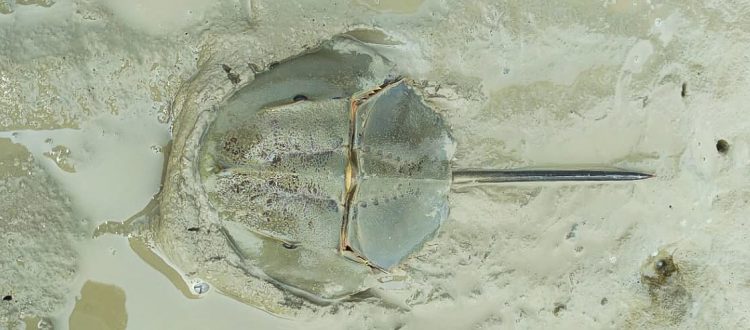Conservation of horseshoe crabs in Sagar Island, Sundarbans
Sundarbans is the largest contiguous mangrove ecosystem in the world between India and Bangladesh. One of the several denizens of this unique ecosystem are horseshoe crabs, a prehistoric crustacean that has been around for more than 300 million years. Studies in Sundarbans indicate the presence of two species of horseshoe crabs (HSC) – the Indo Pacific HSC (Tachypleus gigas) and the Mangrove HSC (Carcinoscorpius rotundicauda), known to thrive in areas with mangrove vegetation and intertidal mudflats. However, over the past decade, their numbers have been declining due to severe loss of habitat. Despite being listed under Schedule IV of the Wildlife Protection Act (1972), there is a lack of protective measures implemented for the crabs in this region. The gap in knowledge regarding their distribution, behaviour and ecological significance further makes conservation of the species challenging.
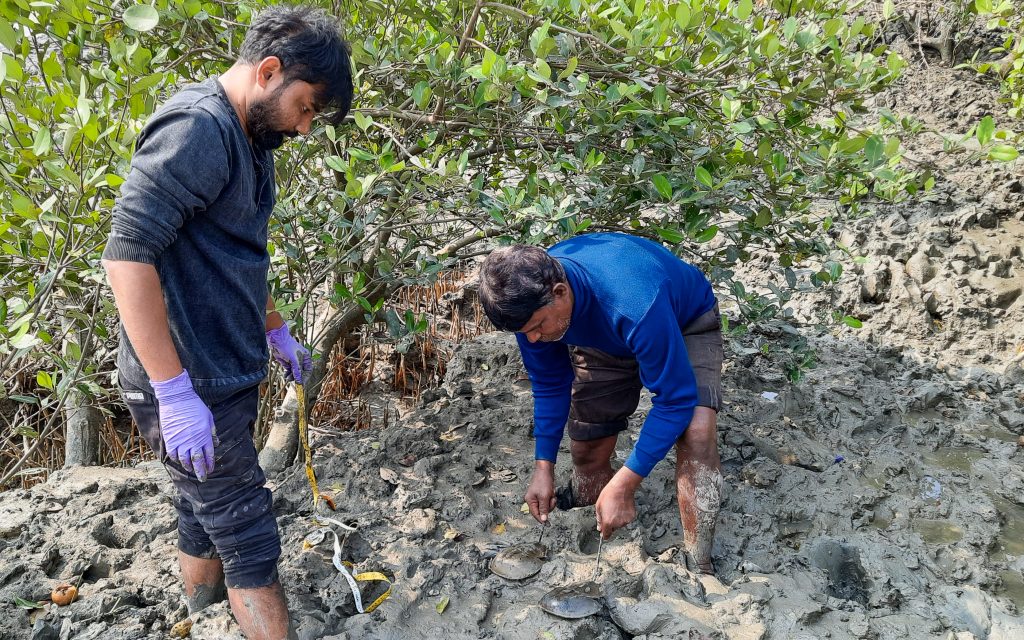
Assessment of Horseshoe Crab population in Sundarbans | Photo by Dr. Punyasloke Bhadury
Amphan and its trail of devastation
A severe cyclonic storm, christened ‘Amphan’ hit the coastal stretches of West Bengal on 20th May, 2020. Accompanied by torrential rain and with a speed greater than 160 km/hr, the cyclone caused colossal damage to the state and its coast. The habitat of HSCs too suffered severe damage impacting their overall population. In order to understand the extent of damage to the habitat and its effect on the species, a Rapid Action Project (RAP) was led by Dr. Punyasloke Bhadury from IISER Kolkata.
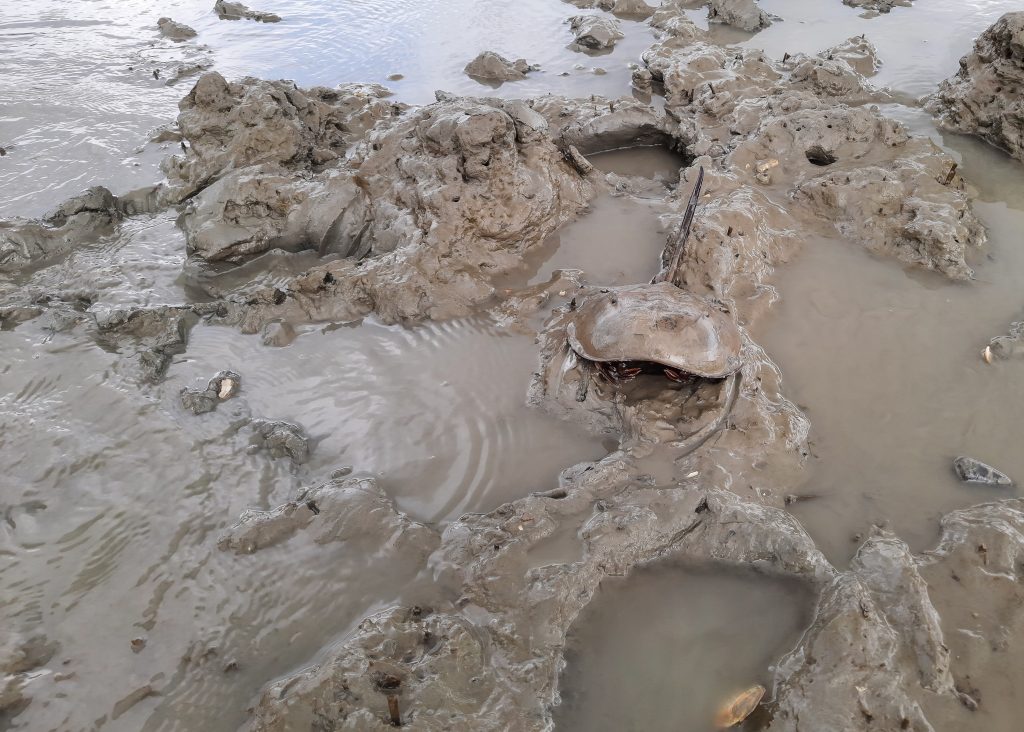
Horseshoe Crab in the mudflats of Sundarbans | Photo by Dr. Punyasloke Bhadury
The project was carried out in Sagar Island, one of the worst affected areas. Located in the western part of Sundarbans facing the Bay of Bengal, it is one of the largest islands in this landscape. Post the cyclone, a significant part of the mangrove vegetation, especially Avicennia trees (most prominent species), were uprooted due to erosion of the sediment layer of the soil. However, the cyclone also caused young seedlings dispersed south of the island and within 6-8 months, the mangrove patches had started regenerating. However, no recovery of vegetation was observed at the original location where the damage had occurred.
Damage control
An assessment of sediment texture revealed that clay became dominant after the cyclone where originally silt was dominant. Such changes in composition thereby affect the benthic zone, impacting the availability of resources to HSCs. A huge amount of debris, in particular plastic wastes, was found in the habitats of the HSCs. These included ghost nets, plastic sheets, bottles, disposable masks, plastic flowers used for religious activities, etc. To ensure that this debris did not affect the feeding and breeding of HSCs, systematic removal of the debris was carried out with the support of local fisher folk communities. Bimonthly cleaning drives was undertaken during the study period with an average of 20 kilograms of debris haul in each drive. Segregation analysis of debris showed the highest concentration was of fishing gears (28%) and plastic bags (24%).
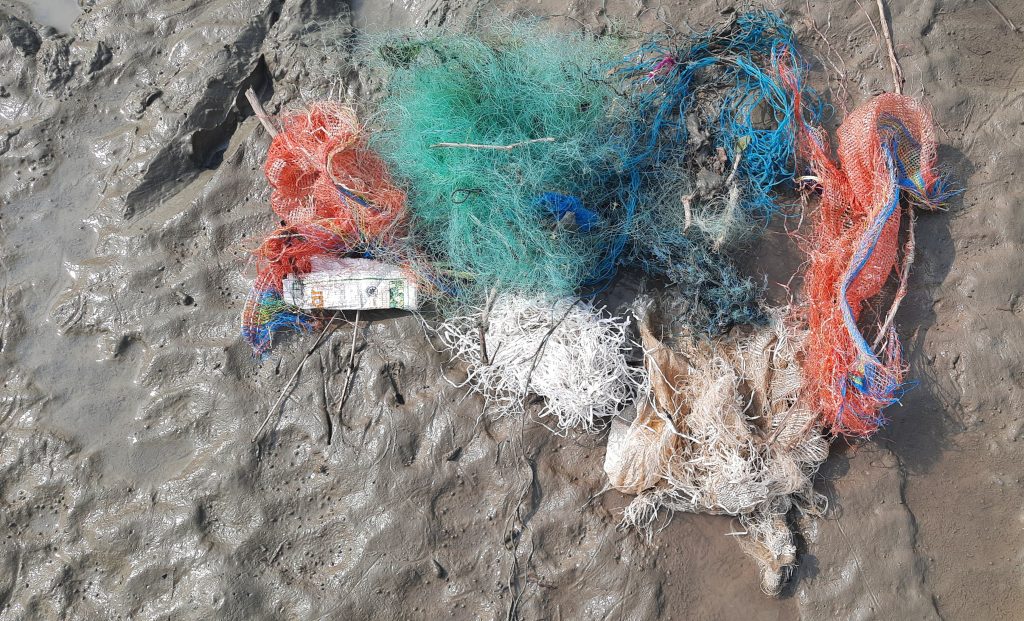
Marine debris in Sundarbans National Park | Photo by Dr. Punyasloke Bhadury
One of the key objectives of the project was to mobilize and engage local communities for the protection of HSCs. 36 HSCs caught in ghost nets and plastic debris were rescued and released during the course of the project. A majority of these were mangrove HSCs and including several gravid females. 11 crabs showed injury marks and were therefore monitored in a nearby laboratory before being released back into the waters of Sagar Island. This activity helped create a sense of responsibility among the fishermen to safeguard these crabs. 10-15 locals were actively engaged throughout the project and some have taken the role of “Ecoprotectors” to communicate the importance of conserving HSCs to other coastal communities.
Unfortunately, the sightings of HSCs decreased drastically after the cyclone. While 2-3 individuals were easily seen every 1 kilometer stretch of South Sagar Island, only 1-2 individuals were now traced, once in 3 months. Due to the lack of concrete studies on this species, it also became difficult to analyze the overall impact of the cyclone on their population. This RAP helped generate baseline information on HSCs and their habitats while paving the way for the first coordinated rescue and release initiative for the species in this landscape. Future conservation plans for HSCs need to ensure long-term improvement of their habitats by conducting science-based mangrove plantations and sustainable management of debris with a special focus on involving fishermen communities.
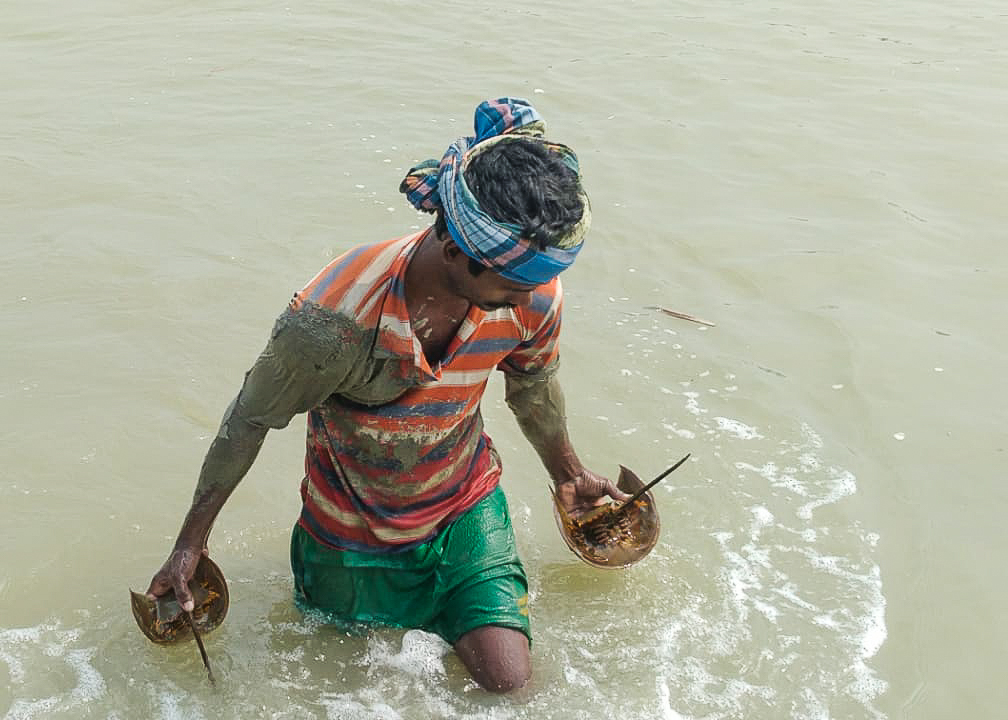
Engaging locals in the conservation of Horseshoe Crabs in Sundarbans | Photo by Dr. Punyasloke Bhadury
Rapid Action Projects such as this, provide urgent critical support to local individuals and organizations to nip wildlife emergencies in the bud. A series of effective outcomes through a consistent approach contribute to a larger conservation impact. If you know of a deserving individual or organization that needs support to effect conservation action on the ground, get in touch with us through rap@wti.org.in.

